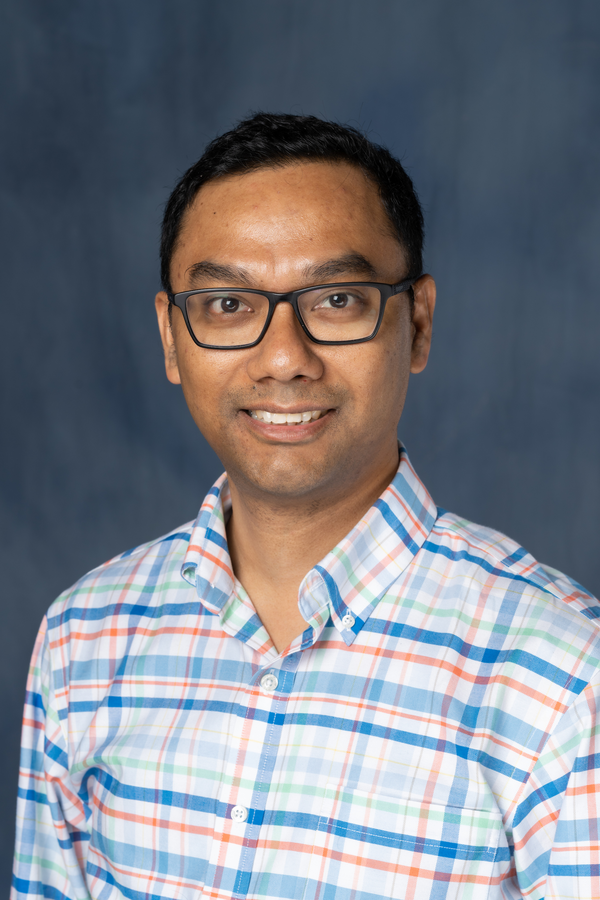
Distinguished BIOE 500 Seminar Speaker - Pinaki Sarder
- Event Type
- Seminar/Symposium
- Sponsor
- Bioengineering Department
- Location
- Everitt Laboratory 2310
- Date
- Nov 20, 2024 12:00 - 12:50 pm
- Views
- 340
Pinaki Sarder Ph.D
Associate Professor MD-Med
Quantitative Health
University of Florida at Gainesville
Title: Digital Pathology Meets Spatial Omics: Emerging Problems in Data Integration, Solutions, and New Opportunities
Abstract: This talk will introduce parallel advancements of two emerging fields, computational pathology and spatial –omics, in the modern era of biomedical sciences. Accordingly, my team leverages computational image analysis tools and best engineering practices to integrate spatial –omics datasets with their associated histology images, to draw meaningful conclusions. We work to fundamentally understand cell type and cell state compositions and underlying quantitative morphometric features at various scales from transcripts to tissue microanatomy. Additionally, I will highlight our ongoing efforts within the Human Biomolecular Atlas Project (HuBMAP), a consortium spanning 42 sites, focused on creating an atlas of the human body at the cellular level using spatial technologies. Moreover, I will discuss the detection and segmentation of multiple cell types and cell states as well as tissue microanatomy exclusively from brightfield histology images. Furthermore, I'll explore several use-case studies of these tools including use in kidney disease trajectory prediction, relevant to the NIH Kidney Precision Medicine Project (KPMP) consortium, and distinguishing glomeruli with chronic and acute injury. Additionally, I will demonstrate our cloud-based open-source distributed software systems (FUSION Functional Unit State IdentificatiON in Whole Slide Images, accessible at http://fusion.hubmapconsortium.org/, and CompRePS Computational Renal Pathology Suite, accessible at https://athena.rc.ufl.edu/). These systems are designed to conduct various computational image analysis tasks related to digital pathology, starting with the analysis of brightfield histology images and extending to the integration of histology with spatial omics data. We'll conclude by discussing new opportunities and potential directions for collective contributions in the field of computational pathology.
Bio: Pinaki Sarder is currently an associate professor of AI in the Section of Quantitative Health of the Department of Medicine as well as the Associate Director for Imaging in the Intelligent Critical Care Center at the University of Florida (UF). Before joining UF, he was an associate professor in the Departments of Pathology & Anatomical Sciences and Biomedical Engineering at the University at Buffalo (UB), where he was at the center of building the computationally enabled graduate program Computational Cell Biology, Anatomy, and Pathology. Prior to UB, he completed post-doctoral training at Mallinckrodt Institute of Radiology at the Washington University in St. Louis (WUSTL) School of Medicine. He received his B.Tech. degree in electrical engineering from the Indian Institute of Technology, Kanpur, in 2003, and M.Sc. and Ph.D. degrees in electrical engineering from WUSTL, in 2010. Dr. Sarder serves on the editorial board of the Journal of the American Society of Nephrology (JASN), is the Associate Editor of IEEE Journal of Biomedical Health Informatics, and a senior member of IEEE. He serves as research co-lead for ASN’s Augmented Intelligence and Digital Health Task Force. He was a recipient of the UB’s Exceptional Scholars – Young Investigator Award in 2018. His research interests include computational fusion of diverse spatial omics data while focusing on diabetic kidney disease. Dr. Sarder’s research is funded by National Institutes of Health, Kidney Precision Medicine Project (KPMP) Consortium, and Human Biomolecular Atlas Project (HubMAP) Consortium.